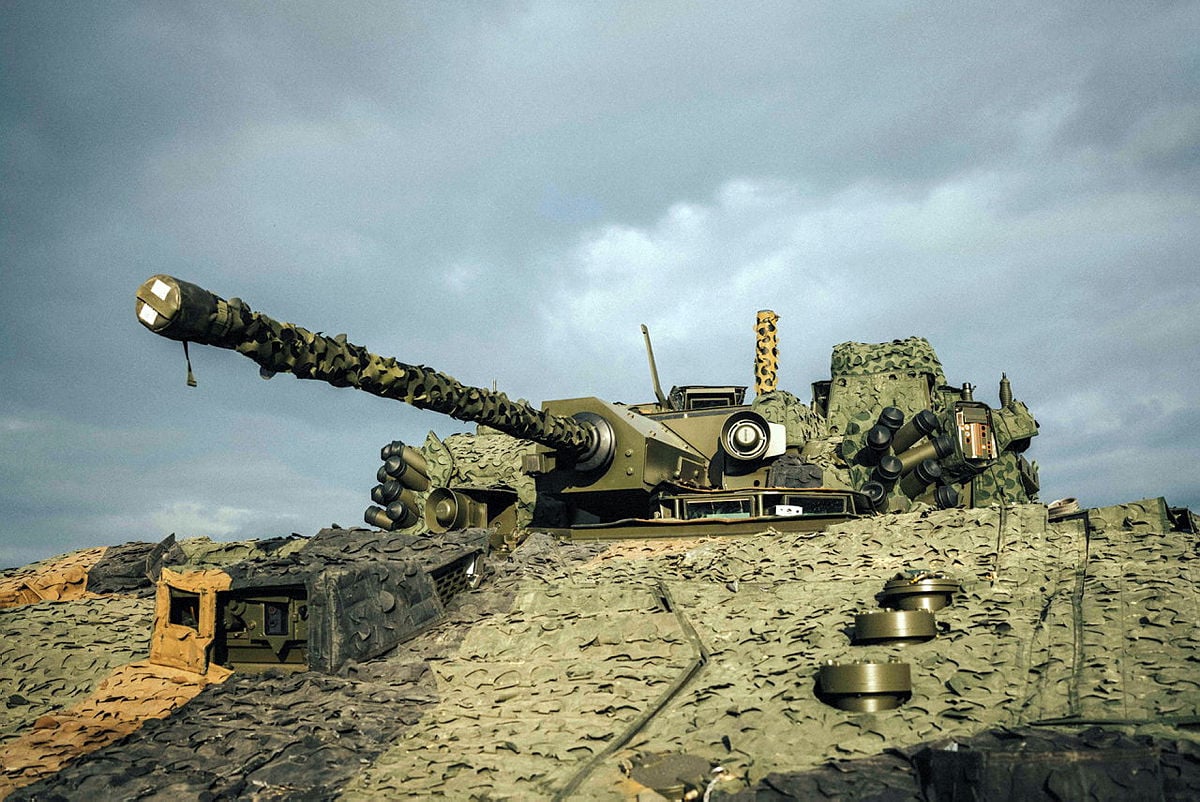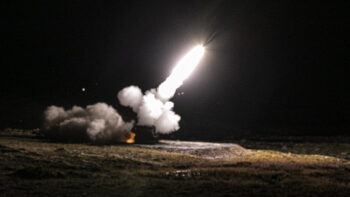
The Ajax reconnaissance vehicle is key to the UK’s modernization plans, but faces challenges. (UK Ministry of Defence)
AUCKLAND: After years of relying on aging wheeled and tracked land vehicles, a number of key Western European nations are now in the midst of an overhaul of their fleets, with an eye to achieving the right level of mobility, lethality and protection for the service in the modern era.
All told, the efforts in the United Kingdom, France, Germany, Italy and Spain could ultimately involve buying in excess of 3,200 new heavy armored platforms, with a price tag of over $11.5 billion over the next 15 years. And what these nations buy will have to interface with US Army gear and operations for decades to come.
United Kingdom
The drama surrounding the British Army’s £5.5 billion Ajax reconnaissance vehicle program continues.
A Sept. 6 statement from the defense procurement minister, Jeremy Quin, revealed that problems of excessive noise and vibrations in the Ajax vehicles were raised in Dec. 2018, contradicting previous assertions that there was no knowledge of these issues prior to those discovered by the Armoured Trials and Development Unit. Quin added that the “overlapping of Demonstration and Manufacturing phases added complexity, technical risk and safety risk into the programme.”
For its part, prime contractor General Dynamics UK has stated that “Noise and vibration injuries were not raised with GDLS–UK prior to autumn 2020.” It added that whilst it is working with the UK MoD “it does not anticipate that any significant system or chassis modifications are required to address feedback on noise and vibration raised by vehicle Users.”
However, Quin’s statement raised the prospect of design modifications to the vehicle to reduce the impact of vibrations, adding, somewhat ominously, that “it is not possible to determine a realistic timescale for the introduction of Ajax vehicle into operational service with the Army.” The hope is that trials at the Millbrook Proving Ground can “resume imminently” using crew from GDUK in MoD vehicles.
Meanwhile initial fabrication of hulls for the British Army’s Boxer 8×8 vehicles have started in the UK at WFEL’s facility in Stockport in July. Full rate production will transfer to WFEL and to Rheinmetall BAE Systems Land (RBSL) in 2023 once initial Boxer production is completed by Germany’s ARTEC consortium, which designed and manufactures the vehicle. Rheinmetall, a member of ARTEC, began series production of the UK’s Boxer vehicles at its facility in Germany in June.
Five prototypes and 523 series production Boxers will be delivered under a £2.8 billion contract signed with the ARTEC in November 2019. They will be delivered in four variants: APC, equipment support, C4I and ambulance. Trials are expected in June 2022 with acceptance into service of the initial vehicles in 2023.
The next big question is how the UK will replace its cancelled Warrior Infantry Fighting Vehicle (IFV) upgrade program. An option being considered is to simply buy more Boxers, potentially a variant fitted with the Kongsberg RT60 turret and Vilkas module.
The UK is also investing in a stopgap effort that involves upgrading 148 of its remaining 227 Challenger 2 Main Battle Tank to the Challenger 3 standard. The UK signed a May 7 deal with RBSL, worth £665 million, for an upgrade package including a new 120mm smoothbore L55A1 main gun, vehicle digitization, survivability improvements and enhanced target acquisition capabilities. RBSL is expected to deliver the upgraded tanks in 2027. It will give Challenger an extra 10 years of service life before a replacement has to be found.
France
In comparison to the UK efforts, France’s Scorpion armored vehicle procurement program has gone smoothly. The Army decided some time ago it wants a modern fleet of mainly wheeled vehicles and Scorpion is delivering these alongside a mid-life upgrade to its Leclerc MBT.
The Army is modernizing 200 Leclercs to the XLR standard following a June contract signed with Nexter to begin work on the first batch of 50 tanks. The upgrade is due to start in May 2022, with all 200 vehicles to be completed by 2028 to a budget of about €350 million. The XLR standard includes the new SICS combat system, Contact radios, a new commander’s sight, remote-controlled weapons station, additional IED protection, fire control system and armor.
In stark contrast to Ajax, the French Army’s own Jaguar ERBC 6×6 armored reconnaissance and combat vehicle received its qualification in April, including completion of the first test-firing of a MMP medium-range anti-tank missile.
A spokesperson from Nexter, which is building the Scorpion vehicles, told Breaking Defense that the first 20 Jaguars will be presented to the French military by the end of 2021. “These deliveries were expected in April, but delays due to Covid-19 meant deliveries were officially shifted,” per the spokesperson. “Some firings or tests are planned throughout 2022.”
About 300 Jaguar vehicles are on order, with the first 150 due by 2025. This is part of the recent 2019-2025 Military Planning Law that called on the acceleration of deliveries for both Jaguar and the Griffon VBMR 6×6 APCs.
“By the beginning of Sept. 2021, we have delivered about 300 Griffon (mostly in VTT FELIN and EPC variants). 8 variants on 10 expected will be qualified by the end of October 2021,” the Nexter spokesperson said. A total of 1,872 Griffon are to be delivered by 2030. Both Griffon and Jaguar are slated to cost about €1 million per unit.
France and Germany are continuing their development of the Main Ground Combat System (MGCS) following the signing of an agreement in April 2020 that kick started a systems architecture study. Production of a full system demonstrator is expected in 2024 and series production in 2028. The MGCS MBT will replace the Leclerc and German Army Leopard 2 MBT.
Germany, Italy and Spain
Speaking of Germany: Berlin is upgrading its Puma IFV to the new S1 standard, following a €1.04 billion contract signed with the Rheinmetall/KMW joint venture company PSM in June. An initial batch of 154 vehicles will be completed by 2026, and include MELL/Spike anti-tank guided missiles, new optronics, driver situational awareness and SVFuA software defined radios. 40 vehicles were already delivered in April, enough for a Panzergrenadier armoured infantry formation, so that the German Army could lead NATO’s Very High Readiness Joint Task Force (VJTF) in 2023.
Meanwhile in Italy, the latest Documento Programmatico Pluriennale planning document that was released in August announced a range of armored vehicle projects to modernize the Italian Army. The main program in the short term is for a new “Sistema di combattimento per la fanteria” — Combat System for the Infantry. The €2.05 billion program is a family of vehicles that includes an IFV and supporting variants including a command post, anti-tank, mortar, engineering, reconnaissance, air defense, medical, ammunition transport and driver trainer. Definition studies are underway, the big costs won’t kick in until 2027-2035.
And finally, in Spain, production is due to start on its new 8×8 Dragon VCR infantry fighting vehicle. The Army is due to receive 348 of the General Dynamics European Land Systems made vehicles between early 2022 and 2029. The €1.74 billion contract by the Spanish MoD was awarded on Aug. 25. Dragon is based on GD’s Piranha V vehicle, with a turret and 30mm gun from Spanish company Escribano included; however, rival company Rafael has protested the turret award.






















